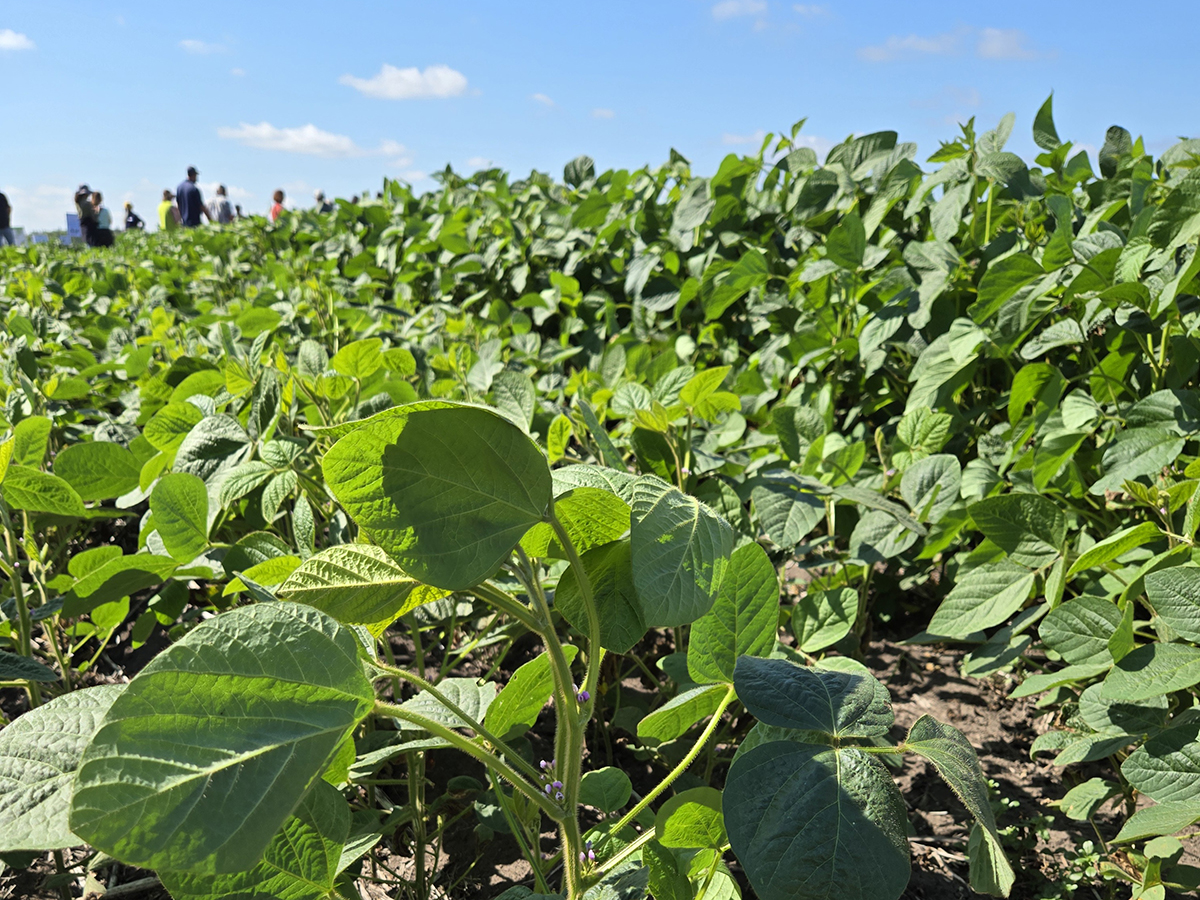It is a long dusty trip from travelling the back roads trying to convince skeptical farmers to secretly try a radical new tillage system to being part of Canada’s global warming negotiating team and finally being feted by the prime minister and the governor general.
Calvin Wayne Lindwall, retired Agriculture Canada director general for environmental health, has travelled that road.
For more than 30 years, he promoted conservation tillage, which includes leaving crop residue on the land, direct seeding and continuous cropping.
In the early years he was described as a kook, a dangerous radical promoting an unacceptable farming practice. And that was from his friends and family.
Read Also

Spider mites big soybean problem this season
Spider mite issues have been geographically limited but significant where they occur, said John Gavloski, an entomologist with Manitoba Agriculture.
“When I told my dad what I was doing, he said I was nuts,” Lindwall recalls with a smile. “In those days (the early 1970s), tillage and summerfallow were considered the only way and anything other than that was heresy. Black was beautiful, at least when it came to exposed soil.”
But a revolution has happened. The majority of prairie farmers now practise some form of minimum or reduced tillage and Canada has convinced the world that it should be able to count conservation tillage land as carbon sinks that contribute to the country’s credits under the Kyoto protocol on climate change.
“Until we got involved and were able to present the evidence, agriculture at Kyoto was only seen as a contributor to greenhouse gas emissions,” Lindwall said. “We were able to prove that Canada is the only country in the protocol that actually is seeing increased carbon in our farmland. I’m proud of that.”
That Kyoto breakthrough, as well as the revolution in tillage practices, landed Lindwall at Government House recently to receive the Outstanding Achievement Award of the Public Service of Canada. He is one of only 74 senior civil servants to receive the honour since it was established in 1966 and only one of five agriculture-connected recipients in its 42-year history.
Harper called this year’s five recipients “some of the most talented members of the public service of Canada.”
In the private moments before the award was presented, Harper asked if Lindwall knew former Saskatchewan Liberal senator Herb Sparrow, who as chair of the Senate agriculture committee helped prepare a report in the mid-1980s that is considered a seminal event in the move toward better soil management practices.
“I consider the Sparrow report a very important moment in this movement,” said Lindwall.
He called the conservation tillage movement a revolution in prairie agriculture and like most revolutions, its early promoters often found themselves as outsiders.
He remembers those days vividly.
As a kid who grow up on a southeast Alberta dry land grain farm, he remembers the dry 1960s and soil drift.
“I wondered if there was something about how we farmed that caused that.”
He went to university and found teachers who taught that overcultivation and summerfallow practices were harmful and while studying in Iowa, one of his teachers said Louisiana at the south end of the Mississippi River was growing by 60 acres every year because of soil being washed out of the corn belt states.
But when Lindwall began to promote his ideas as an Alberta government extension worker and then an Agriculture Canada researcher at the Lethbridge Research Station beginning in the late 1970s, he was hardly preaching to the converted.
His departmental bosses received letters from farmers mocking the idea that crop residue be left on the land, that the land not be plowed and that seeds could be planted within the residue in a continuous cropping system. There were demands that he be fired or reassigned to something more useful.
Even farmers who agreed to try test plots with this crazy new idea insisted that they be on the back 40, far from view.
“I, of course, wanted them visible as an example, but farmers told me they had to live with their neighbours,” he said.
But there also were some high profile supporters.
Harry Hays and later his son Dan, senators both, were interested in trying out the new idea on their ranch south of Calgary.
“They were innovators.”
And when small prairie machinery companies began to develop air seeders and other equipment in the 1980s that allowed conservation tillage, farmers suddenly recognized that there was promise.
By the early 1980s, the critical mass of 20 percent of farmers willing to try the new methods had been reached and suddenly the major equipment manufacturers switched from opposing the new methods to seeing a market opportunity.
“That’s when we achieved our critical mass and the balance shifted,” said Lindwall. “It is so gratifying now to see the revolution in the industry and to see this recognition.”














